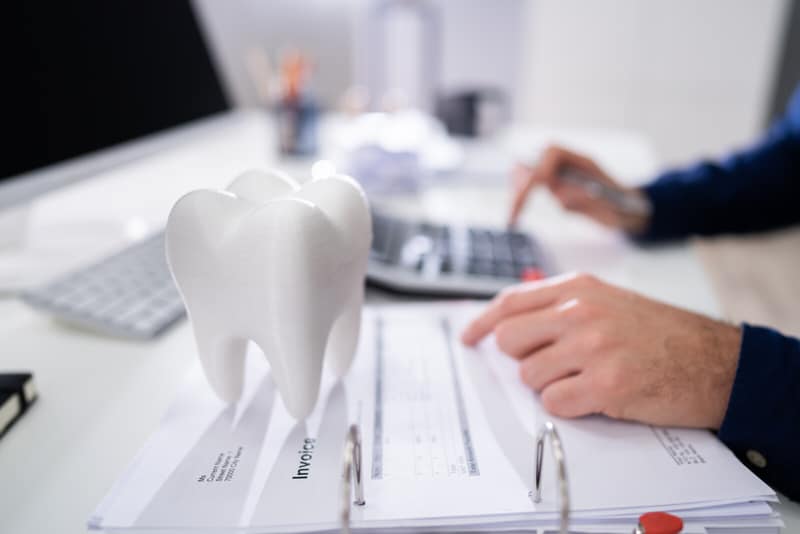In today’s healthcare environment, dental practices face various billing and coding challenges. CDT codes are subject to frequent changes which are not always easy to understand. Billing dental procedures and getting claims approved can also be quite taxing. Submitting dental procedures to a patient’s medical plan or dental medical billing can be even more complex. Practices can rely on outsourced dental billing services to overcome these challenges, but it’s important that they are aware of the common billing and coding pain points that can affect their bottom line.
Common Coding and Claim Submission Challenges facing Dental Practices
- Changing CDT code: CDT codes are updated annually in order to accommodate new technologies and materials, and procedures, which can promote earlier oral disease diagnosis and treatment, and improve patients’ health. For instance, as of January 1, 2020, there are 37 new codes, five revised codes, and six deleted codes.
Here are some of these changes: New codes
-
- D0419 Assessment of salivary flow by measurement
- D2753 Crown, titanium, or titanium alloys
- D5284 Removable unilateral partial denture, one-piece flexible base (including clasps and teeth), per quadrant
- D5286 Removable unilateral partial denture, one-piece resin (including clasps and teeth), per quadrant
- D6082 Implant supported crown, porcelain fused to predominantly base alloys
- D6083 Implant supported crown, porcelain fused to noble alloys
- D6084 Implant supported crown, porcelain fused to titanium or titanium alloys
- D6086 Implant supported crown, predominantly base alloys
- D6087 Implant supported crown, noble alloys
- D6088 Implant supported crown, titanium or titanium alloys
- D6120 Implant supported retainer, porcelain fused to titanium and titanium alloys
- D6121 Implant supported retainer for metal FPD, predominantly base alloys
- D6123 Implant supported retainer for metal FPD, titanium and titanium alloys
- D6195 Abutment supported retainer, porcelain fused to titanium and titanium alloys
- D6243 Pontic, porcelain fused to titanium and titanium alloys
- D6753 Retainer crown, porcelain fused to titanium and titanium alloys
- D6784 Retainer crown 3/4, titanium and titanium alloys
- D7922 Placement of intrasocket biological dressing to aid in hemostasis or clot stabilization, per site
- D9997 Dental case management, patients with special health-care needs
Revised codes
- D1510 space maintainer – fixed, unilateral – per quadrant. Excludes a distal shoe space maintainer.
- D1520 space maintainer – removable, – unilateral – per quadrant
- D1575 distal shoe space maintainer – fixed – unilateral – per quadrant fabrication and delivery of fixed appliance extending sub gingivally and distally to guide the eruption of the first permanent molar (does not include ongoing follow-up or adjustments, or replacement appliances, once the tooth has erupted).
Periodontal category descriptor revisions (site)
- If two contiguous teeth have areas of soft tissue recession, each area of recession tooth is a single site.
- Depending on the dimensions of the defect, up to two contiguous edentulous tooth positions may be considered a single site.
Deleted codes
- D1550 Recement or rebond space maintainer
- D1555 Removal of fixed space maintainer
- D8691 Repair of orthodontic appliance
- D8692 Replacement of lost or broken retainer
- D8693 Recement or rebond fixed retainer
- D8694 Repair of fixed retainers, includes reattachment
- Troublesome CDT procedure codes: According to a 2018 www.dentistryiq.com report, a study reported the most troublesome procedures as:
- D4341: Periodontal scaling and root planing, per quadrant, is described as involving “instrumentation of the crown and root surfaces of the teeth to remove plaque and calculus from these surfaces.”
- D2740: Crown-porcelain/ceramic substrate
- D2950: Core buildup, including any pins when required
These codes require the most supporting documentation for adjudication and are most often rejected at the first submission.
- No CDT code to accurately describe service provided: According to the ADA Center for Professional Success, while the annual CDT code update helps keep procedures and documentation in step, dentists may find that there is no CDT code for a particular procedure they are providing. This occurs when delivery of new or modified dental procedures and the CDT Code maintenance process are not synchronized. In this situation, the ADA recommends that an “unspecified …procedure by report” CDT code may be considered, such as “D2999 unspecified restorative procedure, by report”. “By report” procedure codes must be accompanied by documentation that describes the service provided. Providers can also use this opportunity to fill the gap by submitting a CDT Code action request. However, it can take almost three years for a code to go through the entire review, approval and implementation process (actdental.com).
- Adverse claim decisions by third party payers: There are coverage limitations and exclusions provisions in dental benefit plan documents, such as frequency limitations, date of service restrictions, least expensive alternative treatment provisions and other policies. Policy-based denials are difficult to overcome. Other reasons for claim denials and delays include using incorrect codes or not submitting supporting documents such as radiographs and other information.
Dental Billing and Coding Best Practices
Failing to use accurate CDT codes in documentation will cause payment delays and denials and also increase fraud risk. Here are some best practices from the Academy of General Dentistry (AGD) to ensure effective coding and accurate claim submission, and reduce risk of denials and allegations of fraud:
- Use the most precise and up-to-date code to reflect the procedure performed. The CDT Code that is valid on the date of service should be reported.
- Submit supporting documentation such as narratives and radiographs. Diagnostic radiographs must have the patient’s name and the date on which they were taken. Claims for teeth treated with crowns or on lays must include periapical images. Periodontal treatment determinations generally require charting and radiographs. Narratives should be clear and concise, and state the diagnosis and reason why the procedure was performed.
- Ensure that the patient’s personal information is entered correctly – birth date, Social Security number, and insurance policy and group numbers.
- If a claim is denied for lack of dental “necessity” or “appropriateness,” even if all the required information and documentation have been submitted, file an appeal as articulated in the explanation of benefits (EOB). Language from the code’s nomenclature and/or descriptor in the CDT Code should be used to file the claim and explain why the services provided were necessary or appropriate.
With all these unique challenges, many practices are opting to outsource their dental billing and coding tasks. With AAPC-certified coders who stay informed about CDT and ICD code changes and payer guidelines, an experienced dental billing company can help providers submit error-free claims and ensure optimal reimbursement. Established medical billing companies also provide dental insurance verification and pre-authorization services, including patient registration and enrollment.




